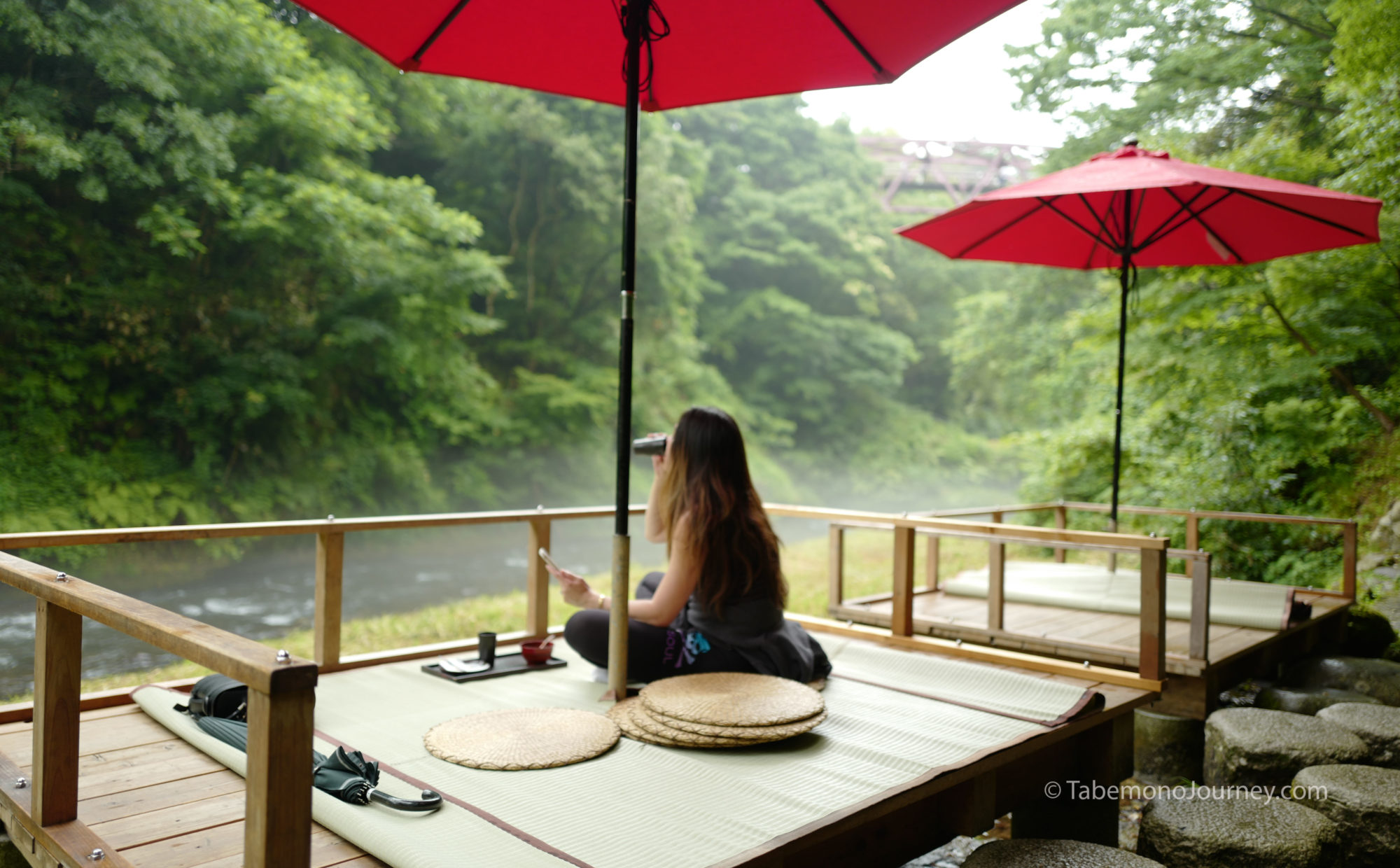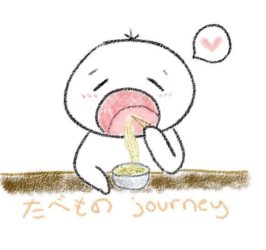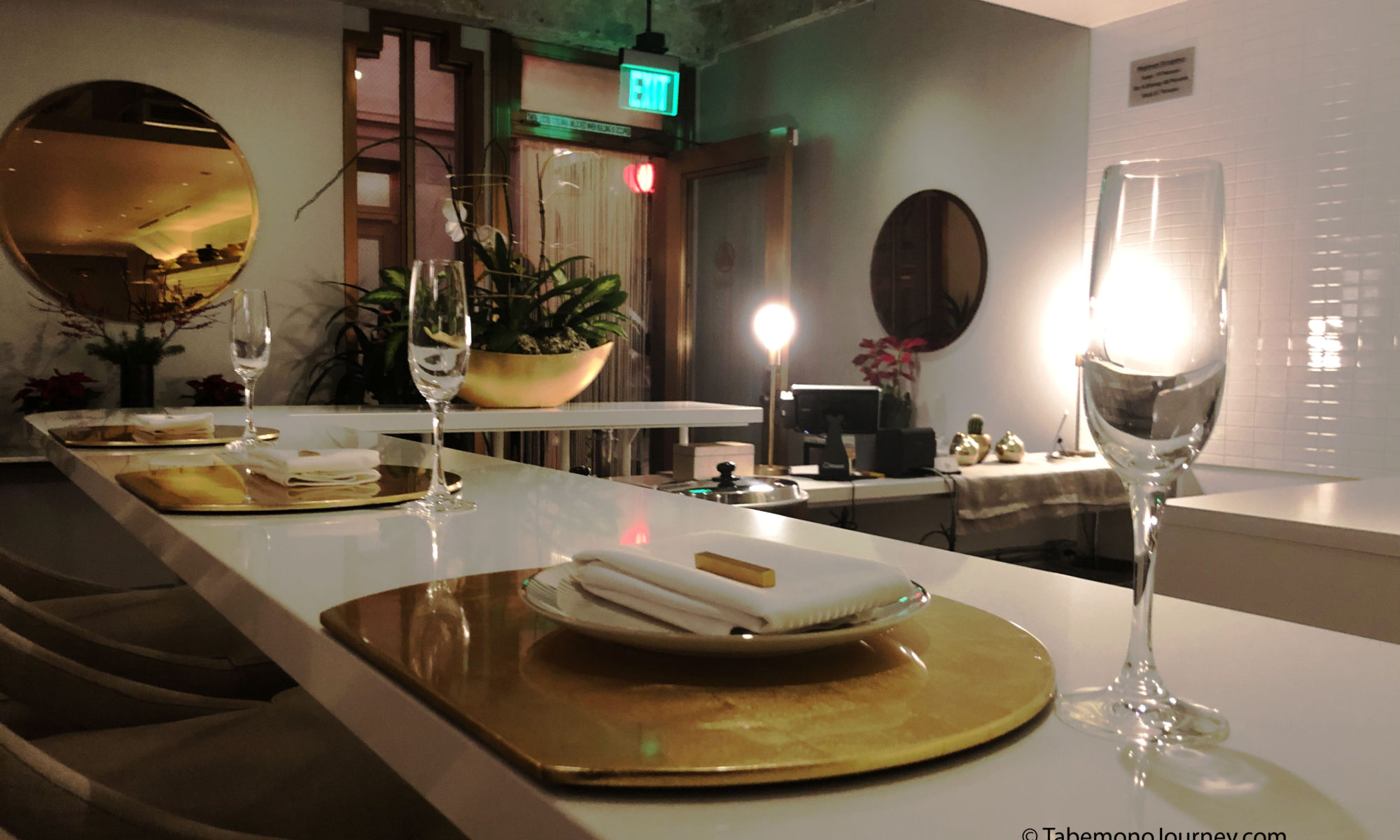The Shota is one of the many omakase restaurants that opened in the last couple of years in San Francisco. The chef/owner is Ingi “Shota” Son. Chef Ingi is familiar to me as he made sushi for me when he worked at Omakase (another sushi spot in SF). I remember that he had a soft, quick, and delicate touch to his sushi making. I also remembered that Omakase’s shari (sushi rice) was not a favorite of mine as I found it soft and under-seasoned. Since Chef Ingi was only one of the many chefs at omakase, I know he did not oversee the direction of the sushi. I read that he went on to work at Hashiri and had prior experience at Morimoto in Napa. Now, having his own restaurant, I was curious to see if his sushi aligned more with my preferences.
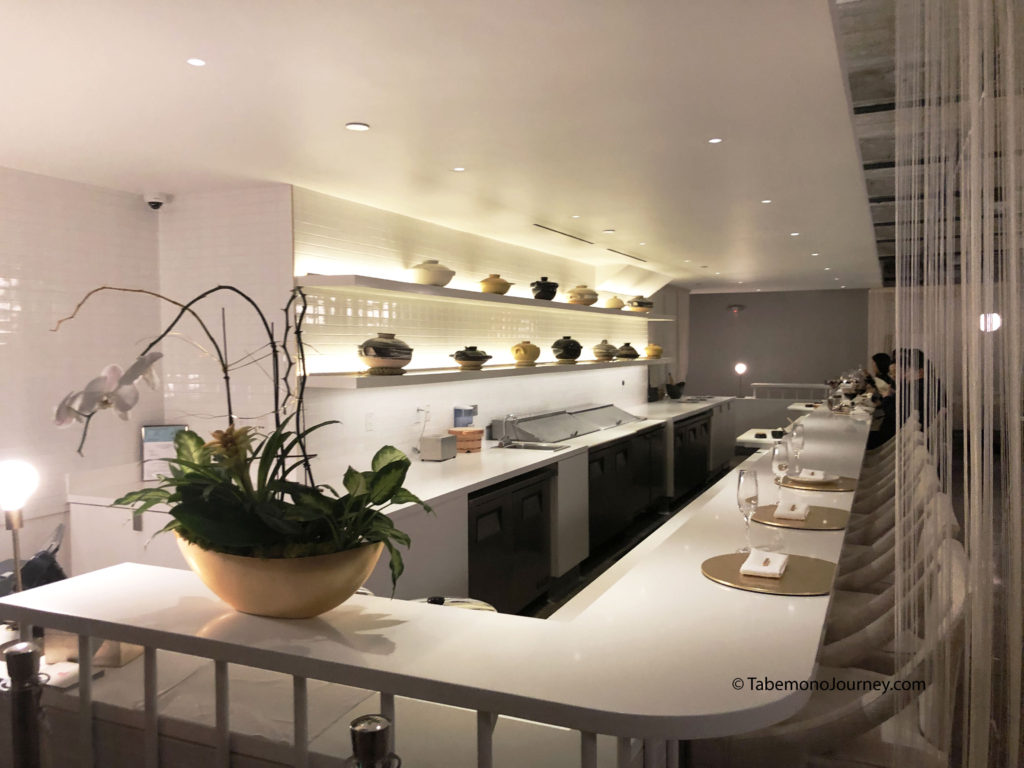
I was able to grab same-day reservations during the middle of the week. Once we were seated, the one thing we noticed right away was that the restaurant is large. The bar counter can seat up to 20 people. The restaurant has a modern and sleek look that does not quite match a traditional sushi eating experience. Maybe I’m old-school but I like to see hinoki wood counters when eating sushi, then again Chef Ingi is young. We were not seated with Chef Ingi but instead by Chef Hide, who is quite a journeyman as he was from Japan and worked in Hawaii, New York, and New Mexico.
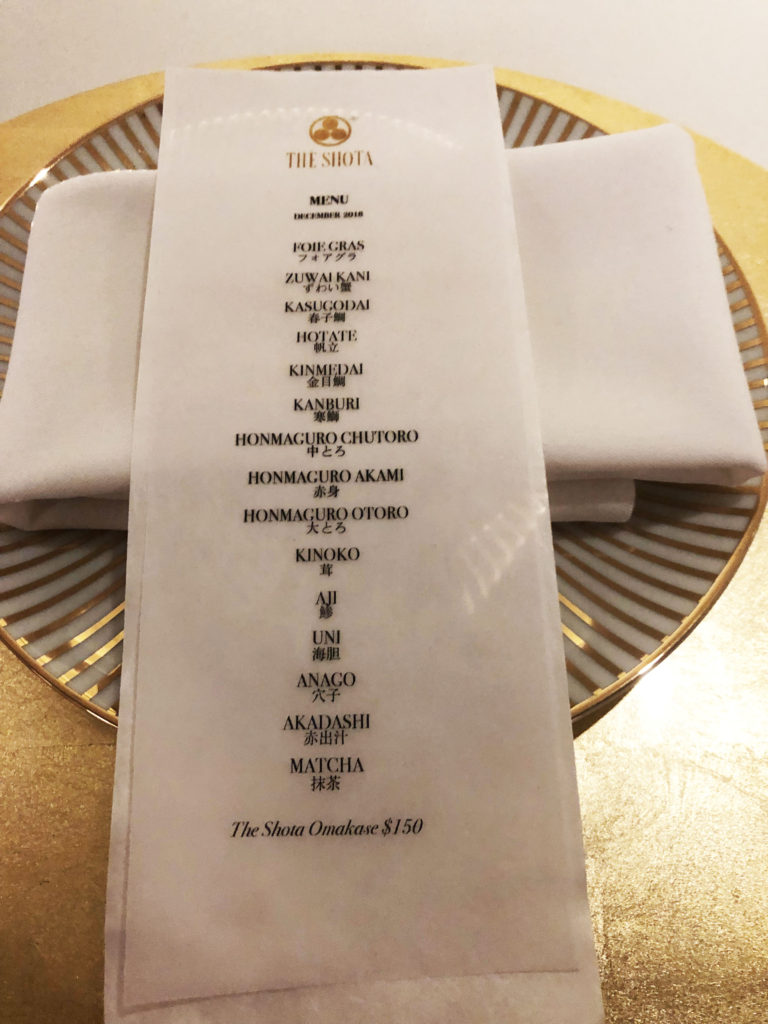
I visited in late December 2018, at the time his omakase was $150 for the omakase menu which included a 14 item course. I really do not know why many of the omakase places in the Bay Area do this but they try to ake a hybrid nigiri/kaiseki approach. Sushi in itself takes years of mastery and a continuous passion to perfect, and the same can be said of kaiseki. It’s tough to blend both of them in the same course, and it is no different here. I feel this messes with the nigiri progression. I prefer the Tokyo style where they give you otsumami (small dishes) in the beginning then followed up by the nigiri. I’m assuming some of the menu create was inspired from when he worked at Hashiri.



We started our meal with a golden globe wrapped in a silk cloth. Inside was a savory and generous portion of foie gras pate, uni, and caviar. While I love the dish, I do question it as a starter for sushi/kaiseki omakase. The flavors of sushi and kaiseki are subtle and delicate, and this was strong and heavy.
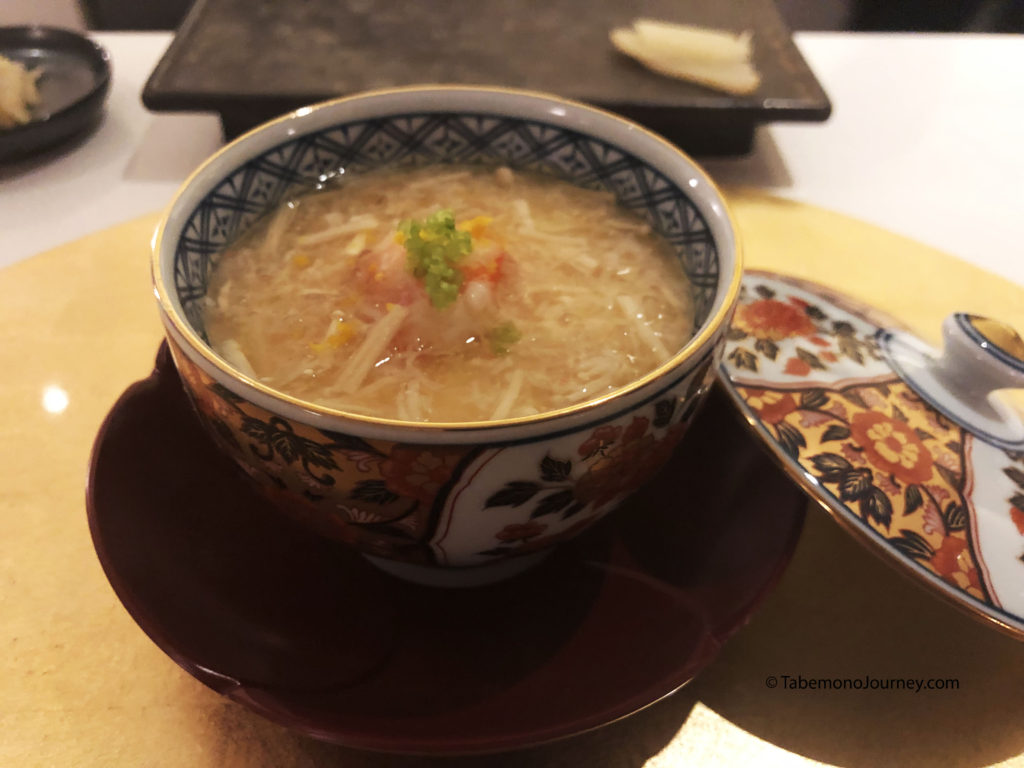
The next course they called zuwai kani, which is a snow crab chawanmushi. Chawanmushi is a soft and savory steamed egg custard. They do a very good job here as the egg custard was silky and smooth. I loved how it was topped with a generous portion of snow crab. Mixed in the chawanmushi were eggplant and a ginko nut.



Our first set of nigiri came and I was curious to see how the shari (sushi rice) would taste and feel. These three used kome-su (rice vinegar) in the shari to pair with the first. The shari was better than Omakase, as it was well seasoned, not soft, and good temperature control. I would have liked a bit more salt, but it was good.
- Kasuodai is baby sea bream and it was nicely cured
- Hotate is scallop and this one was the big ones from Hokkaido
- Kinmedai is golden-eye snapper and was torched



The kanburi (winter yellowtail) was next and it was presented in a glass dome with smoke. It was a dramatic entrance as the glass dome was lifted and you get a strong but nice flavor of smoke. The smoke flavor was not overpowering to the yellowtail and it paired nicely with the nori, mustard paste, and wasabi.




Several nigiri high-lighting different parts of the hon-maguro were next. Depending on parts of blue-fin tuna, you get different layers of fattiness, textures, and taste. We were served akami (lean cut), chu-toro(medium fattiness), and otoro (fatty tuna), to make a trio of hon-maguro. What was interesting here is that Chef Hide used the kome-su shari for the akami (lean cut). But, for the fattier cuts, he switched to an aka-su (red vinegar) seasoning in the shari and used in the remaining nigiri courses. I prefer aka-su in general, and here it was good, but a little underseasoned.
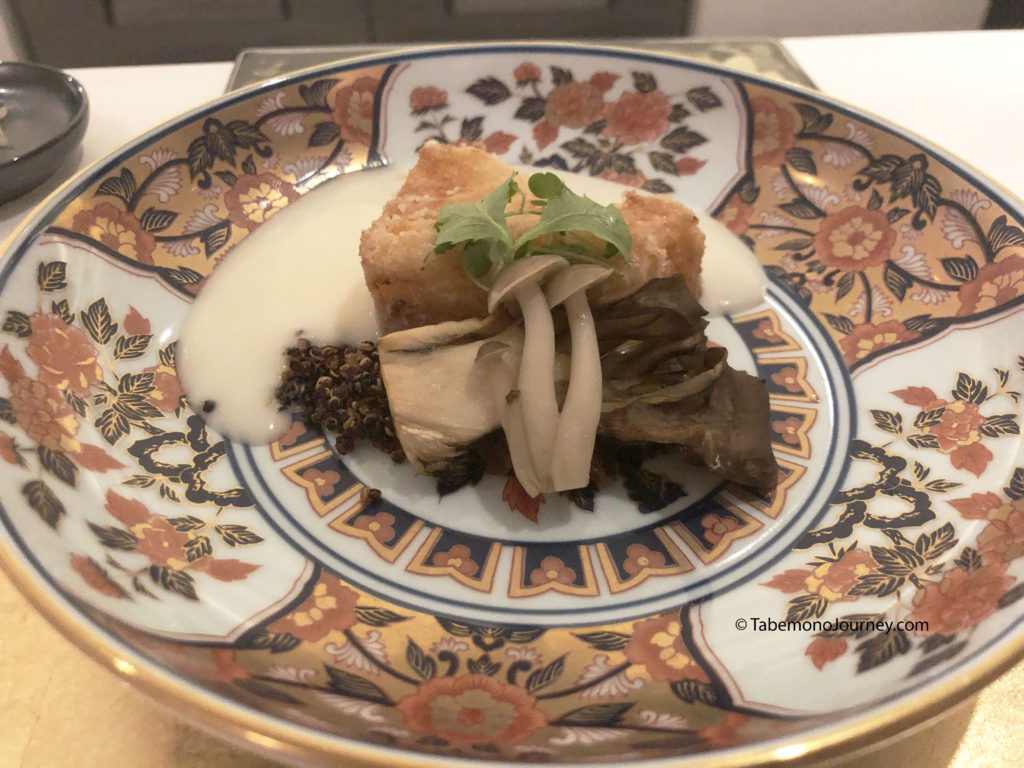
Next up was a kinoko (mushroom) course. It comprised gindara (blak cod fish), maitake, shimeji, toasted quinoa, and a cauliflower sauce. I’m not quite a fan of this course as it relates to the flow of the meal, but appreciate the effort of the Chef Ingi to create his own style.




After the mushroom course, we were served with the last pieces of nigiri and an open request for a la carte items. I requested the kohada as I recall Chef Ingi as it is a good test of a Chef’s skill. In fact, I was a little disappointed it wasn’t part of the main course. Here is what we had:
- Sawara – king mackeral (note menu listed aji, but they gave us sawara instead)
- Bafun uni – uni from Hokkadio
- Anago – deep-sea eel that traditionally wraps up the nigiri course
- Kohada – gizzard shad that I requested extra, good job curing this fish
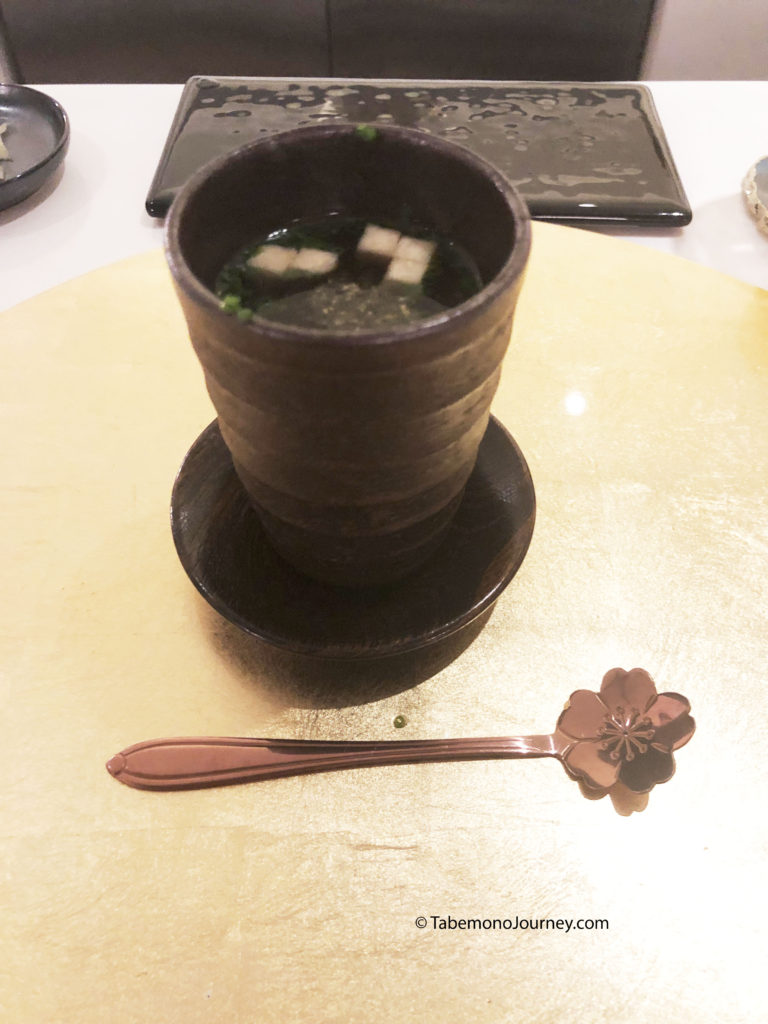
Aka-dashi wraps up the main course. It was made with hatcho miso, king trumpet bits, sansho, and chives.
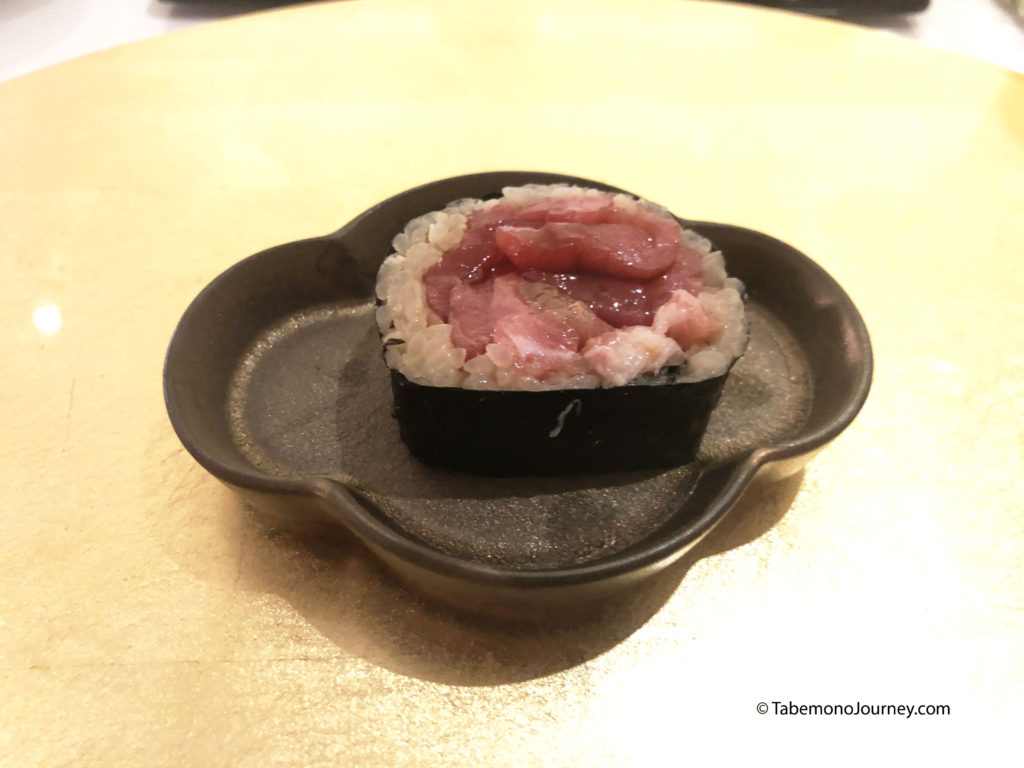
There was a surprise given to all the customers that day. We had a maki roll given to everyone made up of the three cuts of hon-maguro. It was a very nice treat prior to dessert.
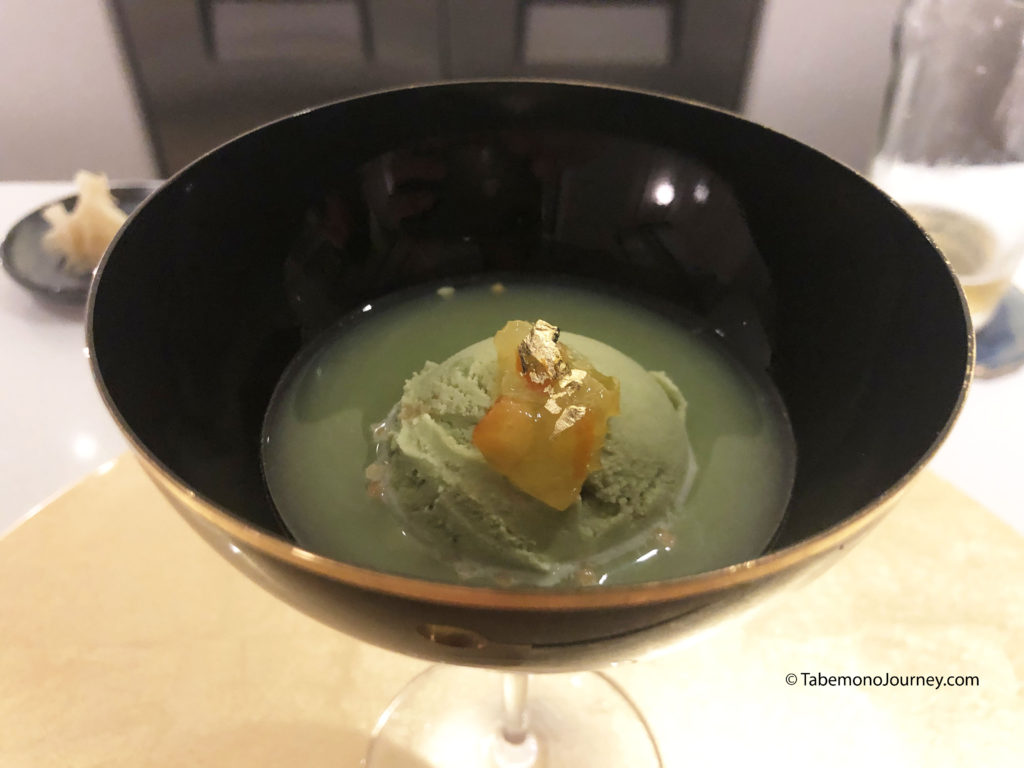
The meal wraps up with dessert. Matcha ice cream topped with gold flake and cara-cara orange jam is paired with matcha tea.
While I thought the meal was good, it misses some marks that prevent me from recommending and wanting to go back. Here’s a break down:
Positives:
- Better shari than what I had from Omakase
- Overall good sushi with techniques, with some aging and curing
- Amazing and friendly service
- Creates own style
Cons:
- Kinda gimmicky with style over substance, may appeal more to casual sushi fans than diehard fans
- Do not like the progression of the meal, feel they should ditch the kaiseki
- The tane (sushi toppings) did not stand out, no unique ingredients given the price point
- Shari can use a bit more vinegar
Although I did not get the opportunity to be served by Chef Ingi this time, I was happy to see the growth of his sushi. The omakase market at $150+ in the Bay Area is tough, and unfortunately at this price point, I rather go to either Yoshizumi or Sasaki. However, I will keep an eye out to see if Chef Ingi continues to grow and mature in his sushi career.
Restaurant Info:
Address:
115 Sansome Street, San Francisco,
CA 94104, United States
Phone Number: 628.224.2074
Email: info@theshotasf.com
Hours: Tuesday – Saturday – 5:30PM & 8:00PM
Website: https://www.theshotasf.com/
